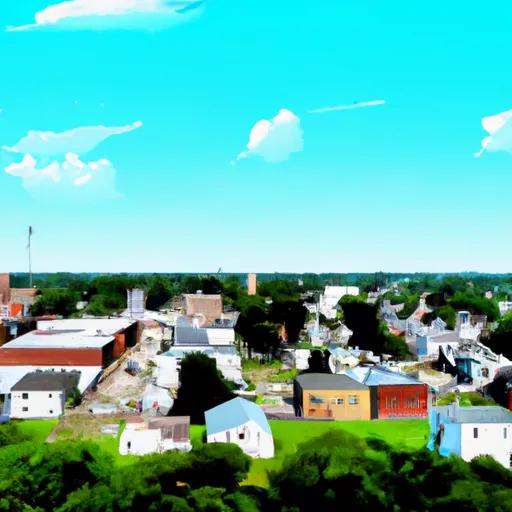°F
°F
mph
Windspeed
%
Humidity











Spencerville, Ohio is a charming village located in Allen County. Its climate is characterized by four distinct seasons. Summers are warm and humid, with temperatures ranging from the 70s to the 90s Fahrenheit. Winters, on the other hand, are cold, with temperatures dropping below freezing. Spring and autumn offer mild temperatures, making them pleasant seasons for outdoor activities.
Hydrologically, Spencerville is situated near the Auglaize River, which adds natural beauty and recreational opportunities to the area. The river, along with several nearby lakes, provides opportunities for fishing, boating, and other water-based activities. The region's hydrology also contributes to the lush greenery and diverse wildlife in the area, making it an excellent destination for nature enthusiasts and bird watchers.
In terms of outdoor recreation, Spencerville offers various opportunities. The village is surrounded by picturesque rural landscapes, providing an ideal setting for hiking, biking, and exploring nature trails. Additionally, nearby parks offer amenities such as playgrounds, sports fields, and picnic areas. Overall, Spencerville's climate, hydrology constituents, and outdoor recreation opportunities make it an appealing destination for those who enjoy spending time in nature.
Weather Forecast
Spencerville receives approximately 961mm of rain per year, with humidity levels near 82% and air temperatures averaging around 11°C. Spencerville has a plant hardyness factor of 6, meaning plants and agriculture in this region thrive during a short period during spring and early summer. Most plants will die off during the colder winter months.
Regional Streamflow Levels
38
Cubic Feet Per Second
462
Cubic Feet Per Second
24
Cubic Feet Per Second
1,150
Cubic Feet Per Second
Nearby Camping
| Camping Area | Reservations | Toilets | Showers |
|---|---|---|---|
| Harrison Lake State Park | |||
| Portage Lake - Waterloo State Rec Area | |||
| Lake Hudson State Rec Area | |||
| Pleasant Lake |



